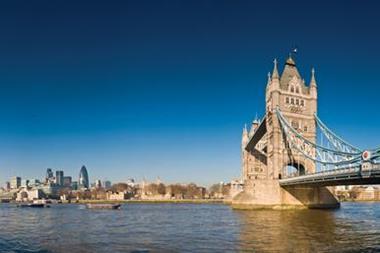Nathan Skinner says that now is the time to consider a captive
The economic downturn is encouraging companies to examine their insurance programmes. At one time or another most big companies will probably have considered the benefits and drawbacks of setting up their own insurance operation.
In the current financial climate there are two obvious arguments. One is that as the wider commercial insurance market becomes less attractive companies will start to consider retaining more risk themselves. The opposing argument is that, with budgets under intense scrutiny, the initial set-up costs and added complexity of running an insurance company is too much for most companies to consider on their own.
There are good arguments on both sides of the debate, and I outline the main ones here.
In favour of captives
First comes the case for captives. It is a simple argument. If premiums are going up, as by and large they are expected to over the next year, why not keep hold of that money yourself and invest it into a captive insurance operation.
A recent survey of delegates at a conference arranged by the Isle of Man, an up and coming captive domicile, showed optimism for captives in the current economic environment. Over 80% of delegates said they thought the current economic conditions would present an opportunity for captives, although some cautioned that the economy might have to stabilise first before prospective corporate owners would be willing to commit capital to a new captive.
If companies want to retain more risk on their balance sheets they will need capital from somewhere when a claim comes in. One way to get this security requirement is through a letter of credit from the bank. Difficulties in the financial sector mean that these letters of credit are currently much more expensive than they have been in the past. With a captive they can be considerably cheaper.
Derek Patience, head of Marsh’s captive management office in the Isle of Man and chairman of the Manx Insurance Managers Association (MIMA), comments: ‘There is still a tremendous potential for growth in the captive sector. Concerns about the current economic situation and view that a hardening insurance market will soon likely be with us are key drivers for the growth in captives in the short term.’
“Sharing the risk with an insurer is always an argument you can use to convince them to partner with you.
Marie Gemma Dequae, president of FERMA
All of the original reasons why setting up a captive could be considered a good idea still stand. Controlling your own insurance programme is a compelling reason. By underwriting your own exposures you can get a much better understanding of the risk. And companies with their own captive often find they are in a stronger position when it comes to bargaining with the insurance market. Often negotiations with commercial insurers take a different tone when the underwriter is aware that the company can put the risk into a captive. ‘It is not what you put in it but the threat of what you could put in,’ says Steven Chirico, one of AM Best’s captive analysts. For the risk manager a captive is a good way of avoiding being held ransom by the insurance market.
For companies concerned by the initial start up costs there are some easier ways of setting up a captive. A protected cell captive (PCC) allows the overheads to be shared between partners, making the captive much cheaper to run from the point of view of the insured. Think of a PCC as a low cost, flexible, version of a captive. By renting a cell within a PCC companies can save time, effort and frictional costs. ‘It is an option that is becoming more popular in the current climate,’ notes Chirico. Lots of domiciles separately legislate for cell captives making them easier to administer.
Doubt around the impermeability of the cell walls is a major turn-off for some boards considering the PCC route. While cell captives have been around for over a decade there is still no significant case law which proves that the assets of one cell cannot be used by another.
And against
Now comes the argument against. For quite a few reasons the current environment is making life hard for captives. Cash restrictions and the cost of capital needed to set up a reserve may lead companies to reconsider whether it is a good idea. A big company cannot begin a relationship with a captive without it having strong financial security. Risk managers will need to convince the board to make a substantial injection of capital with only a promise of realising a payoff somewhere down the line. That can be hard. Setting up a captive with its own reserve means taking money out of the business at a time when cash is needed more than ever.
Captives tend to be used for long tail business, such as property, motor, employee benefits, health insurance, employers liability or workers compensation, which allows them to build up a reserve by investing premiums for many years before any claims come in. As it stands now the commercial insurance market has yet to harden significantly. Property insurance rates are still very competitive, so it may be hard to argue the case for retaining this type of risk.
‘It is a difficult time for setting up a captive,’ comments Merise Wheatley, managing director of Heath Lambert's insurance management division, adding: ‘Until the market hardens there is going to have to be a very strong case.’
Captives are also subject to the same problems of the wider insurance market, which is entering a difficult phase. In general, insurers have been writing long-tail business at low margins for a long time, envisioning that they would be getting cumulative investment income over time. With plunging stock markets around the world that confidence may have been misplaced. ‘Cash-flow underwriting is a big threat to the market,’ says Alan Fleming, chairman of AIRMIC’s captive interest group.
“Captive formation numbers tend to be linked quite closely to the insurance cycle.
The insurance market is also facing a much less benign claims environment. Catastrophe claims are more severe and frequent than they have been in the past. As the economic environment worsens arson and fraud claims are also expected to rise.
Changes to accounting rules represent a problem for the wider market and these are also likely to challenge new captives. Historically soft accounting rules, particularly in some offshore domiciles, meant that insurers could get away with reporting generous loss assumptions and imaginative reserve estimates. Now, with the tightening up of regulatory standards, insurers do not have the same flexibility. New regulations like Solvency II could also make life harder for captives, particularly in relation to the amount of money they have to set aside as a capital cushion. Companies may want to wait and see what happens with these regulations before making a commitment to set up a captive.
The operating environment is tough for captives too. Captives are forced into run-off when their parent companies go insolvent. That is happening more and more. There is also a temptation for parents on the edge of bankruptcy to raid their captive’s reserves. Regulators try to ring fence the capital in the captive and protect it from this kind of marauding.
Future trends
Statistically since right back to the 1960s there has been a steady growth in captives. Now formation numbers are probably slowing, mainly that is because the mature markets, like North America, have reached saturation point and company acquisitions are leading to consolidation. Elsewhere, where captives are less common, like in Europe, there is more potential for growth.
Captive formation numbers tend to be linked quite closely to the insurance cycle. When the demand increases on companies to retain more risk themselves and increase deductibles, or there is insufficient capacity in a particular area, they may start to think about setting up a captive. Franck Baron, a director of the Federation of European Risk Management Associations (FERMA) and vice president risk management and insurance for Firmenich, does not believe that market dynamics which would encourage companies to add more business to a captive are overtly present. ‘The harder market is not that obvious at the moment and lack of capacity is not a big issue,’ he says.
However, Marie Gemma Dequae, president of FERMA and group risk and insurance manager of Bekaert, believes in certain corners of the market capacity has retrenched so much that a captive strategy could help companies convince commercial insurers to partner with a company on particularly bad risks, such as credit. ‘Sharing the risk with an insurer is always an argument you can use to convince them to partner with you on that risk,’ she says.
Nathan Skinner is associate editor, StrategicRISK

















No comments yet